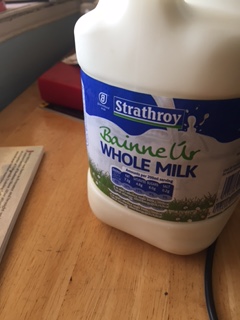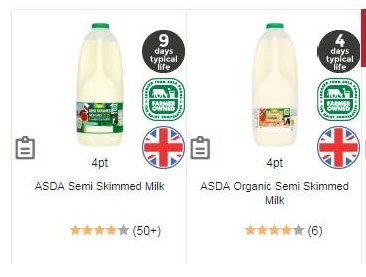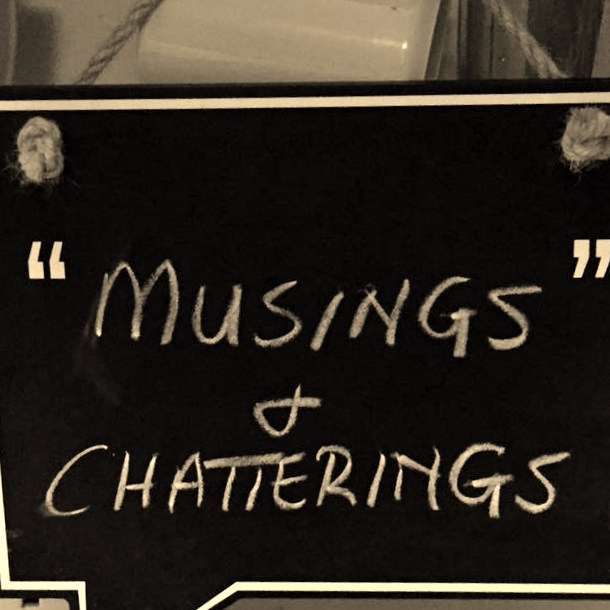Over my first cuppa of the day while daughter was still fast asleep and before life kicked in, I was browsing through one of my (many) cookbooks. Another one that I’ve never actually made anything from. Yet. This particular one was ‘Favourite Cornish Recipes’ and I’ve no idea when or where I picked it up. (That’s true of many of my books actually. Sometimes I think they are breeding.) It included a recipe for Cornish clotted cream, something I can’t abide but my husband would love on a freshly baked scone or two. That’s if I get round to baking any.
The method in the recipe says “Pour the milk into a wide-topped basin and leave to stand for a while preferably up to 8 hours in the refrigerator, to allow the cream to rise to the top.” And that sentence stopped me, mug of tea half way to mouth. Let the cream rise to the top. Do kids today (oh that sounds so middle aged) even know what that means? I vividly remember the cream rising to the top of the bottles (real glass bottles not the awful plastic containers that a lot of people refer to as a can of milk) and when it froze in the winter (real winter!) it used to push the foil lid up off the bottle. Top of the milk in our house was poured over apple pie and was a treat to get. I haven’t seen that in years, and I always buy what is labelled as full fat or whole milk.

So I took to Facebook and Twitter asking did anyone know could this still be bought.
Still musing about how food has changed over the years, I went on to ask if anyone knew could lard still be bought. I haven’t seen lard in a shop for years. I much prefer lard to solid vegetable oils for making pastry. A friend of mine replied that it can be easily bought up the North, which I didn’t know. So unless I track it down elsewhere it looks like I’ll be doing some cross-border shopping soon. Anyway, back to milk. I took a look at Asda’s online shopping site (I don’t shop online but its great for info) and yes, they sell blocks of lard. I searched for non homogenised milk but got zero results. I’ll be back to that word homogenised later.
I prefer to buy organic when I can (not always easy) so was interested to see that Asda sell organic milk. Its on the right in this pic taken from their website earlier today.

I was quite forcefully struck by the info that the non-organic milk has 9 days typical life whereas the organic milk has 4 days typical life. So what’s in the non-organic milk that gives it a longer shelf life?? I don’t have the answers (although I have emailed Asda) and maybe this is nothing new to some, but it jolted me. What are we really consuming and what is it doing to us? I saw a great thing on Twitter this week posted by the blogger Foodborn whose approach to food and eating I love. It said “The food you eat can either be the safest and most powerful form of medicine, or the slowest form of poison.” Food for thought for sure.
Back to homogenised. The milk I usually buy is always homogenised. The dictionary definition of homogenised in relation to milk is “a process in which the fat droplets are emulsified and the cream does not separate.” 
My question is why? Why is this done to milk? Are many of the health problems that we’ve almost come to accept as a society down to the way our food is altered from its more natural state? I’m very aware that many people have been thinking and writing about this far longer than me and are far better informed than me but at least I’m starting to really look at what’s in our food and question what’s best for me and my family to consume.
I think my cookbooks are going to get much more use.

